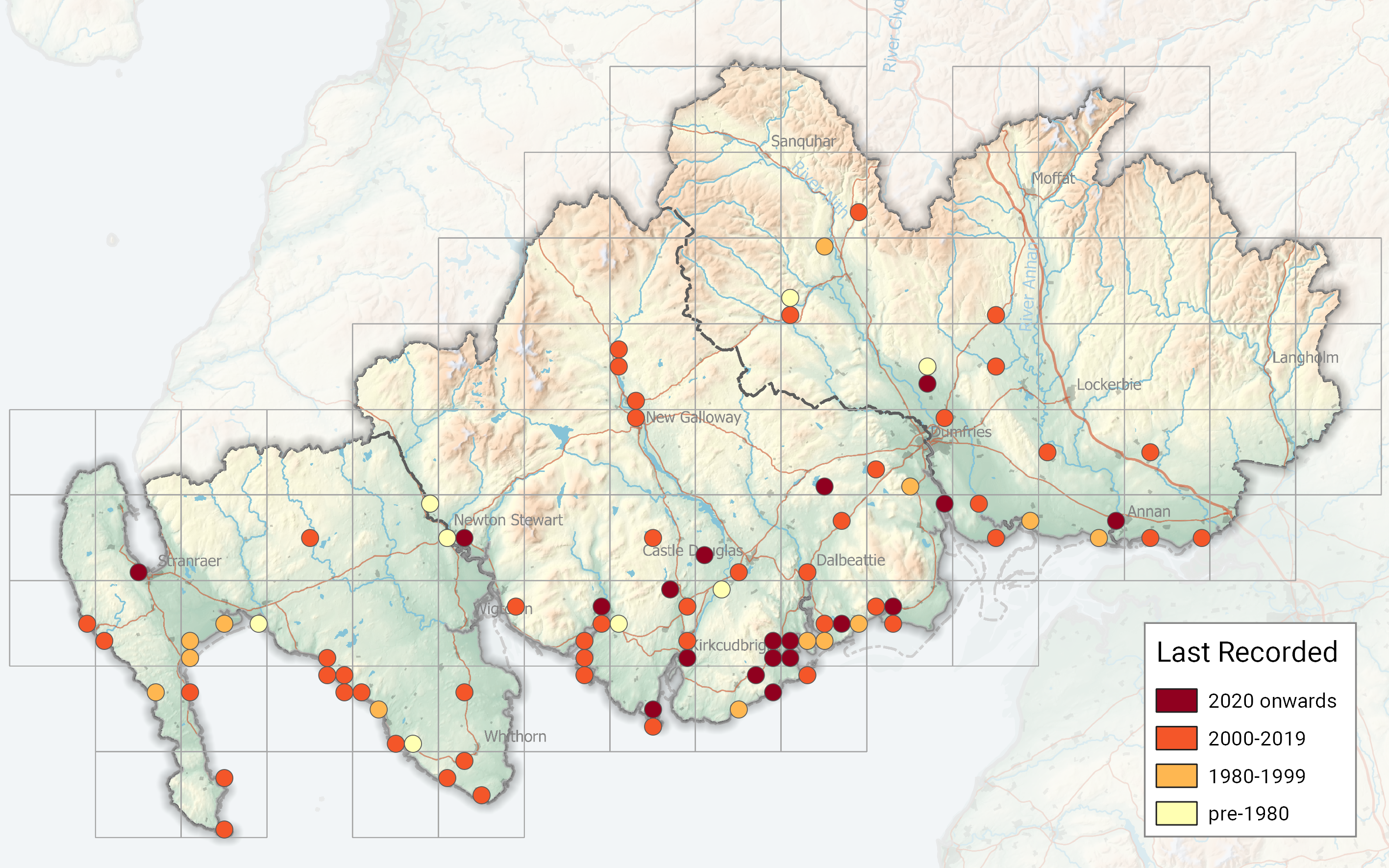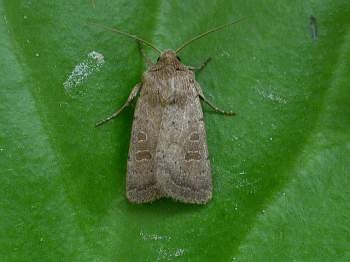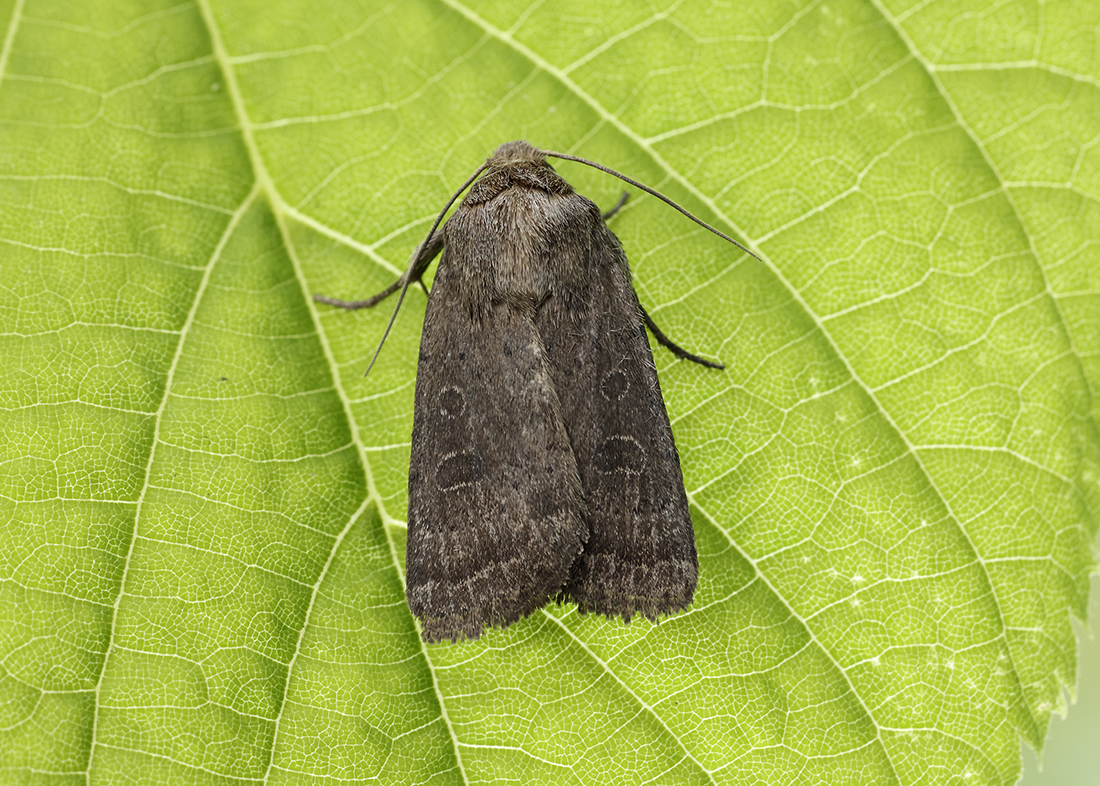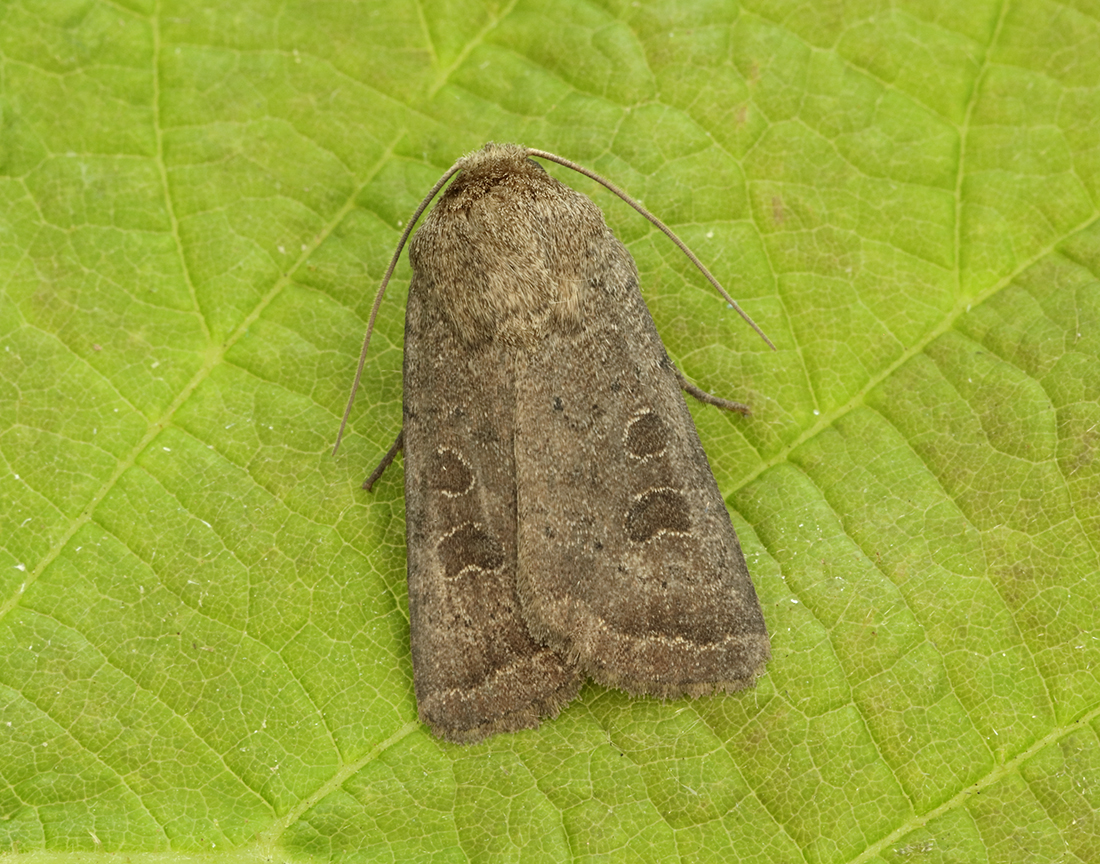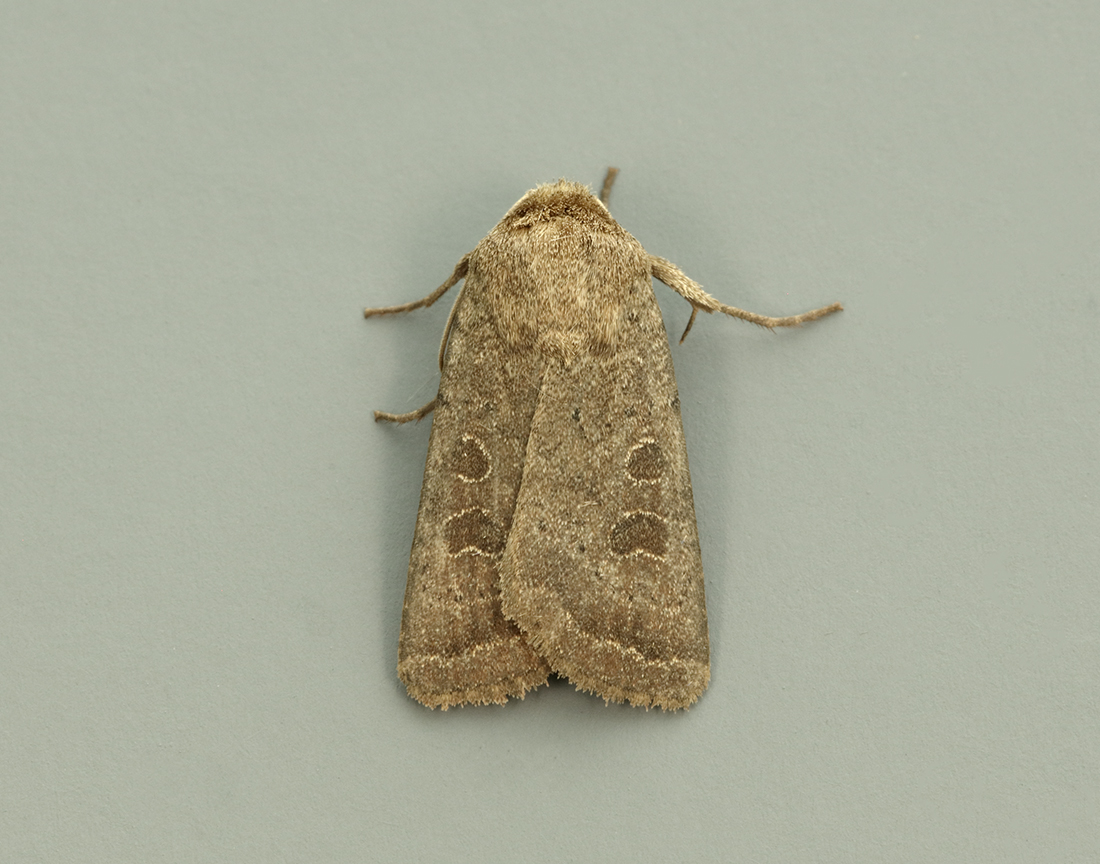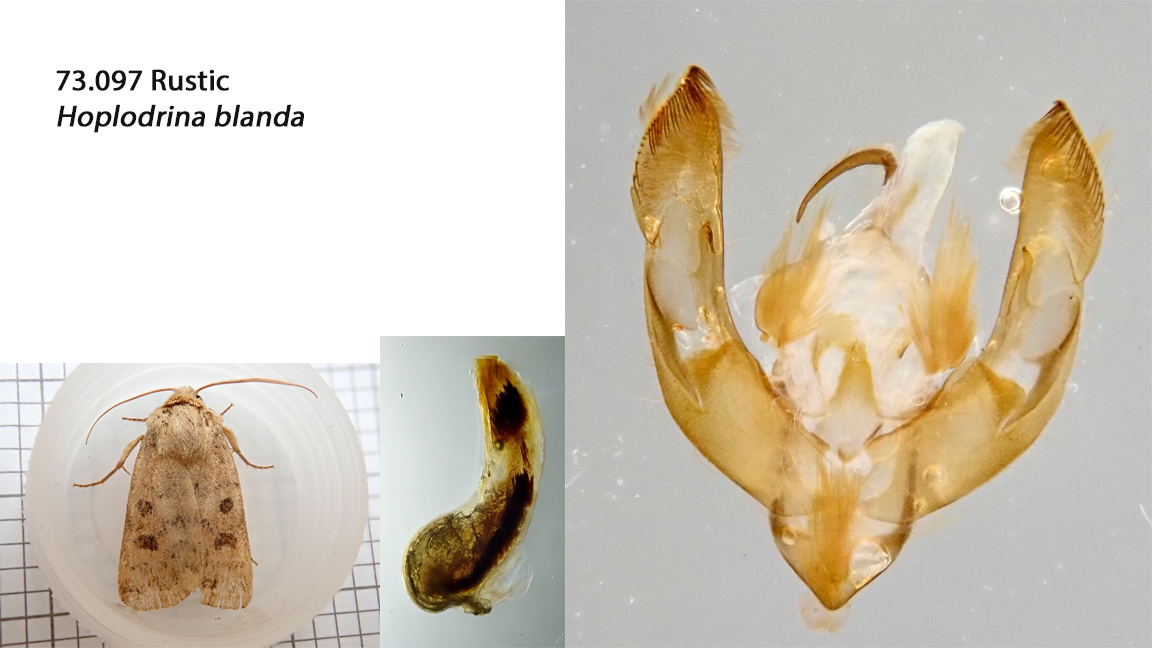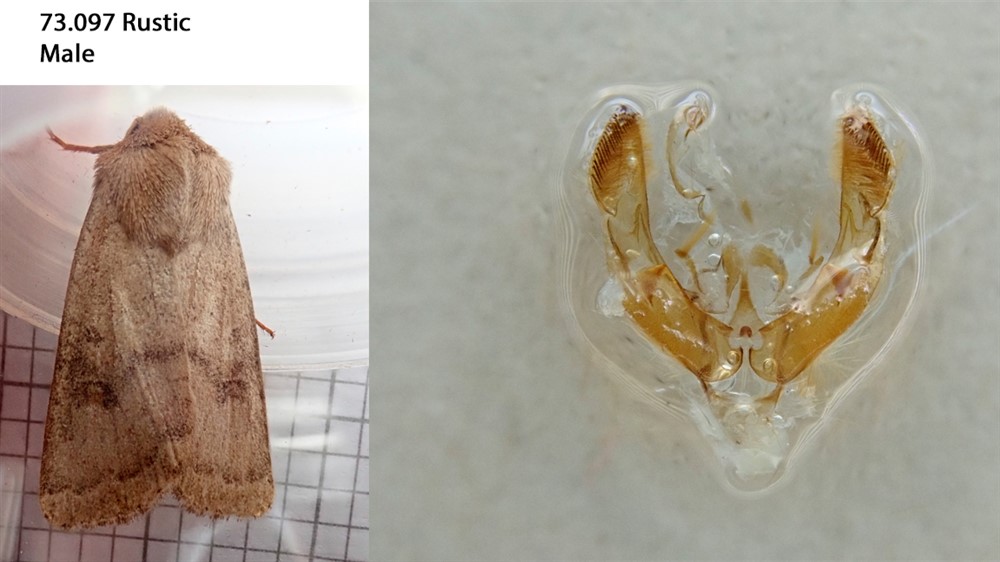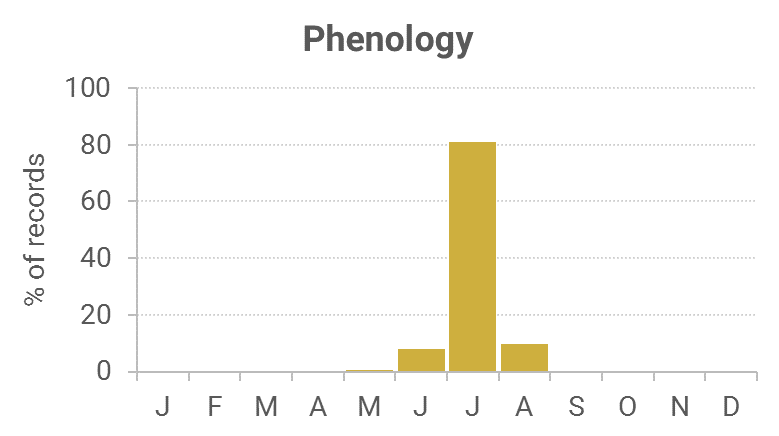Identification
Great care required to separate from Uncertain. The forewing appears smooth and glossy. It also has a colder tone of grey-brown or earth-brown coloration with little visible contrast in the reniform stigma and the forewing colour.
If identification is not clear record as Uncertain/Rustic agg. (Hoplodrina agg.)
Recording Method.
Attracted to light, also comes to sugar and flowers.
Life cycle
One generation. Overwinters as a larva, during July to April, with pupation in a cocoon underground.
Larval foodplants
Chickweeds, docks and plantains and other broad-leaved herbaceous plants.
Habitat
Urban areas and other lowland sites.
History 1860-2010
K. J. Morton of Edinburgh (1900) while on a visit in July 1899 to Wigtownshire had found the Rustic in the Monreith area. Gordon (1913) had found it to be not uncommon at Glenluce golf course, finding it on ragwort 26th July 1905.
Sir Arthur Duncan (1909-84) during his lifetime had found it at Castlehill, Dumfries (VC72).
During 1976-85 five of the seven Rothamsted stations managed thirty records between them, the Dumfriesshire stations not recording it. Bernard Skinner had found it during a visit to Sandhead (VC74) in August, 1987.
From 1994 to 2010 there were about 180 records, mainly from the regular trapped sites at Kirkton, Cally Woods, Kirkcudbright, Carsluith and Carsfad at Dalry, with the rest from scattered sites across the region.

